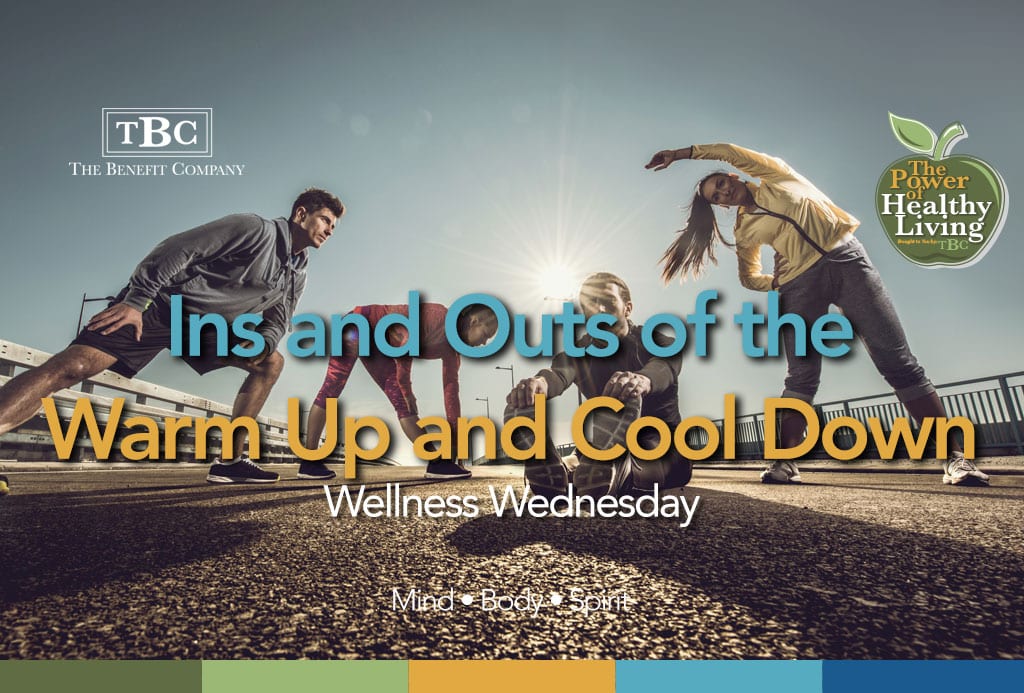OK, you’ve made it to the gym, you’ve donned your sneakers, and you’re ready to go! Or are you? If you’re headed for a workout, whether by yourself or in a group, it’s really important that you arm up before you get into it, and cool down when you’re done.
Feel the heat
Why warm up? It gets your body ready for activity by getting your blood flowing to your muscles. As your blood vessels dilate, your muscles get more oxygen to help them do the work you’re asking them to do. Warming up also raises your body temperature, increases respiration, and lets your heart rate rise gradually. This all helps your body get ready for the more vigorous activity you’re prepared to do. It’s kind of like pre-heating your oven before cooking.
In general, warm up with an easier, slower, less intense version of the exercise you’re planning to do. For instance, before going for a run, warm up by walking quickly for five or ten minutes. Your warm-up shouldn’t tire you out, but you might work up a mild sweat. Slightly longer warm-ups are best for people who are newer to exercise and for those who are getting ready for some extra-intense activity.
Too cool to cool down?
Think cooling down is for wimps? Think again. When you stop exercising suddenly, the blood that’s been helping your muscles work can pool. And the heart and brain won’t get the oxygenated blood they need quite fast enough, which can cause you to feel dizzy or lightheaded, nauseous or even faint. You want your heart to get back to its resting rate gradually and allow your body the chance to recover.
As with warming up, cool down by doing the activity you’ve been doing, but at a slower, easier pace. Another part of cooling down that can be very beneficial is stretching once your heart rate slows down. Your muscles will still be warmed up, so they’ll be more flexible and primed for stretching. Just make sure your stretches are gentle, and that you don’t hold your breath, bounce, or stretch to soreness, cramping and stiffness.
Many people skip the warm-up and cool-down. After all, they make your workout last longer, and we’re always pressed for time these days. But to get the most out of your exercise routine — and to feel extra great afterwards —
a few added minutes on either end of your workout will be well worth it.
If you’re pregnant, have been physically inactive or have a health condition such as arthritis, diabetes or heart disease, check with your doctor before starting an exercise program or increasing your activity level. He or she can tell you what types and amounts of activities are safe for you.
Sources:
Centers for Disease Control and Prevention. Physical activity basics. November 2018. https://www.cdc.gov/physicalactivity/basics/index.htm (Accessed 11/30/18)
Health.gov. Physical activity guidelines for Americans. Second edition. 2018. https://health.gov/paguidelines/second-edition/pdf/Physical_Activity_Guidelines_2nd_edition.pdf#page=82 (Accessed 11/27/18)
American Council on Exercise. Three reasons to stay for the cool-down. February 2018. https://www.acefitness.org/education-and-resources/lifestyle/blog/6926/three-reasons-to-stay-for-the-cool-down (Accessed 11/27/18)
Helpguide.org. How to start exercising and stick to it. September 2018. https://www.helpguide.org/articles/healthy-living/how-to-startexercisingand-stick-to-it.htm (Accessed 11/27/18)
American Heart Association. Warm up, cool down. September 2014. https://www.heart.org/en/healthy-living/fitness/fitness-basics/warm-upcool-down
(Accessed 11/28/18)
Mayo Clinic. Aerobic exercise: How to warm up and cool down. August 2016. https://www.mayoclinic.org/healthy-lifestyle/fitness/in-depth/exercise/art-20045517
(Accessed 11/27/18)
American Academy of Orthopaedic Surgeons. Warm up, cool down and be flexible. https://orthoinfo.aaos.org/en/staying-healthy/warm-upcool-down-and-be-flexible/
(Accessed 11/30/18)
 The Benefit Company
The Benefit Company